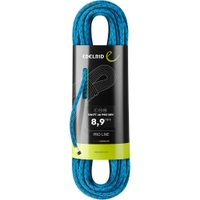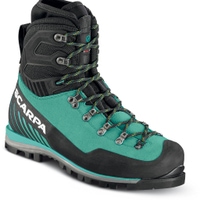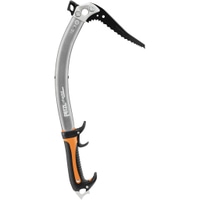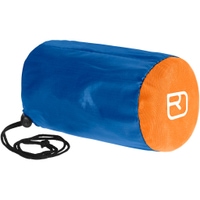When the first snow arrives and temperatures drop below zero, it’s time for a very special kind of climbing: ice climbing. On the one hand, climbing on frozen water includes some aspects of rock climbing, but on the other hand, it’s just – very different.
Here we show you what you need to take your first steps on ice and what is important for ice climbing.
Fitnesslevel when Ice Climbing
To be honest: You can’t do it without fitness. You should have a certain amount of strength and endurance, and it certainly doesn’t hurt if you already have climbing experience. But on ice, other factors must be taken into account, too – temperature fluctuations, sunlight, ice buildup ans structures and, if necessary, avalanche hazards.
In addition, ice climbing is not for the nervous ones. Falling should be avoided at all costs. It would be too dangerous to fall several meters with sharp ice tools in your hand and crampons on your feet – especially since the belays in ice climbing tend to be further apart. But in the beginning you will be in the toprope anyway, that means, you are immediately secured from above with a rope and cannot fall. It is advisable to try out a lot during toprope and test your limits to get a feeling for the ice and gain confidence. Get familiar with the ice: listen, look, feel.
Only when you feel comfortable with it, should you dare to try lead climbing, where you then have to set your belays – the ice screws – yourself.
Equipment for Ice Climbing
Here we present you the most important essentials, so that you can practice your new sport well equipped.
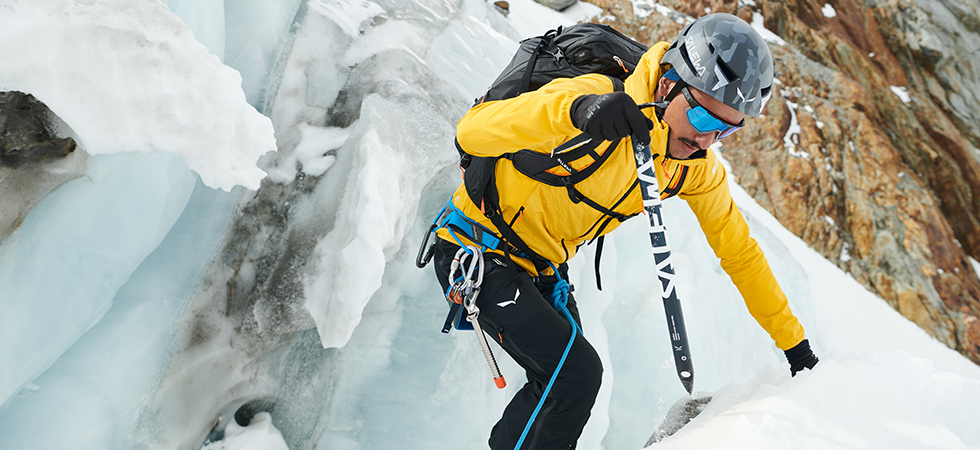
Rope
You should definitely buy an impregnated rope. Because once the rope gets soggy and heavy, the fun stops quickly. Whether you use half ropes, twin ropes or a single rope is a matter of taste. We recommend a single rope for ice climbing, simple ice falls (with descent by foot) or short north face routes. It should be 60 to 80 meters long.
If you are advanced or in difficult terrain, you can also use half ropes or twin ropes, usually 60 meters long. Since the impregnation often breaks down quickly, it is advisable to use these ropes only for ice climbing, then they will last a little longer.
Crampons
In the beginning and in very easy terrain, you will certainly be a bit more stable with double prongs in the front. Crampons with only one frontal prong, on the other hand, are almost always superior to other types in very hard ice and more difficult routes. Because a single frontal prong penetrates better and also further into the ice. The crampons should have anti-slip plates and an automatic binding ensures a better fit on the mountain boot.
Tip: Maybe you can test one or two crampons from your respective mountain school or your friends before you decide. As with so many things, it’s a bit of a matter of taste and depends on what you’re more comfortable with and how you climb.

Footwear
You’ll need warm, crampon-compatible mountaineering boots that are comfortable and fit well. Play a little with your lacing and try out how it fits for you. Tight lacing always means better support, but possibly also poorer blood circulation and thus cold feet….
Important: Lace in such a way that the shoes do not come undone during your ice climbing tour.
Ice tools
These special ice axes fit well in the hand, are usually shorter than the classic ice axe and come with some special features. Interchangeable picks, a curved tube and a good grip with finger protection should be a given. Some ice climbers even tape the handles to have better grip.
A little reminder: the steeper the ice you’re on, the more curved the shaft of your ice tool should be.
Ice screws
Let’s face it: ice screws are expensive. However, your life depends on them, so be sure to look for good quality here. The standard lengths of ice screws are 12 to 14 cm and 16 to 17 cm. Shorter screws are usually only needed in very demanding terrain.
We recommend that in a 2-person rope team, everyone carries at least six ice screws in two to three different lengths. One or two 19 mm screws per team are also recommended for drilling the Abalakov ice holes for the rappel.
It is also important: The screws should have an appropriate lever to be able to be turned quickly into the ice.
For those who are very concerned about weight, there are screws made of aluminum with steel tip.

Harness
Basically, you can use your climbing harness if you already have one. The important thing is that the gear loops are easily accessible and not too far on the back.
Clothing
Ice climbing means you’ll be outside all day in sub-zero temperatures. It’s a constant stop-and-go – not only below freezing, but usually in the shade.
That’s why it’s even more important that you don’t get cold. It’s best not to overdress on the approach and climb, and then have a down jacket or insulating jacket in your backpack for belaying.
If you tend to sweat a lot, you should have an extra shirt with you for after the ascent, maybe even another pair of socks, a change of gloves and an extra beanie.
Hardshell pants protect you from moisture and keep you warm.
As a rule of thumb, the harder the route, the thinner the gloves. However: the thinner the gloves, the less warm they are. Many ice climbers love golf gloves because they are thin but have a good grip. The fact is, you’ll almost certainly get cold hands and need to try out what works for you.
For example, you can take a pair of thinner gloves for climbing and a pair of thicker ones for belaying. When you change used, wet gloves, keep them on your body so they don’t start to freeze.
Speaking of gloves, you might also want to take an extra pair for the approach/descent/rappel so your good ice climbing gloves last longer.
Climbing helmet
A climbing helmet when ice climbing is non-negotiable. It is important that the helmet fits well on the head even with a beanie or headband.
Other accessories
You should definitely have an ice-anvil threading device and a rappelling device with you to get back down from your tour. You should also always have a couple of rope cords on your harness. In case of an emergency, a pocket knife and a Tibloc can also be important.
Material carabiners on the harness are recommended so you can clip and sort your ice screws there.
So that you do not lose your ice tools in the middle of the tour, you can attach elastic catch cords, so-called leashes – but this is not mandatory and rather intended for alpine tours.
Of course, a first aid pack, your cell phone, a headlamp and, if necessary, a bivy sack also belong in your backpack.
If you are traveling in avalanche-prone areas, an avalanche transceiver, shovel and probe should not be missing. Remember: snow could also slide down above your tour, so be sure to inform yourself about the snow and avalanche situation beforehand.
Ready for Ice Climbing!
Now you are ready for your ice climbing adventure. We recommend you take a course if you’ve never been on the ice before. Of course you can also ask your friends to teach you, but then only rely on really experienced ice climbers.
Watch out and have fun!



